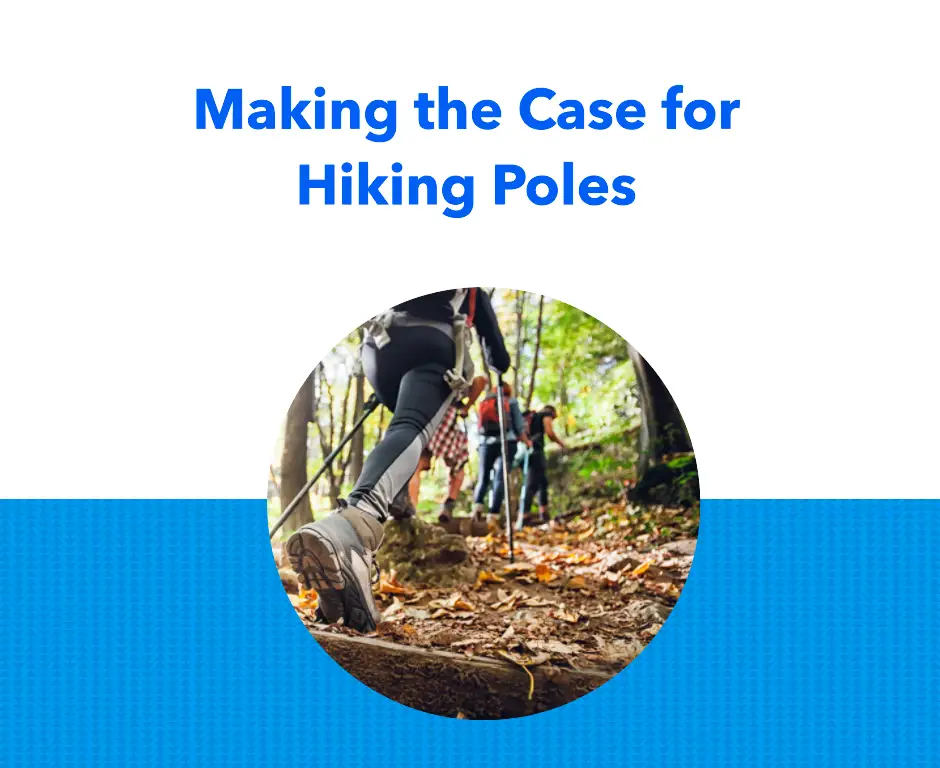Table of Contents
Some links on posts are affiliate links and will earn us a commission from qualifying purchases
Hiking poles, also known as trekking poles or walking poles, have become an increasingly popular accessory among outdoor enthusiasts. Yet, there are still those who remain sceptical, with many misconceptions surrounding their use. In this blog post, we will address and debunk the most common myths about hiking poles, demonstrating how they can significantly enhance your hiking experience.
Myth 1: Hiking Poles Aren’t Authentic
For some, the idea of using hiking poles can seem to detract from a perceived “authenticity” of the hiking experience. They may see using poles as a form of cheating, or not engaging fully with the spirit of hiking. However, this perspective is fundamentally flawed.
Poles have been in use for centuries by those who have traversed mountainous terrain, from the shepherds of the Pyrenees to the Sherpa people of the Himalayas. Hiking poles represent a continuation of a long-standing tradition of utilizing tools to help navigate uneven and challenging landscapes.
Furthermore, there is no definitive “authentic” way to enjoy the great outdoors, as individual preferences and needs vary greatly. Ultimately, incorporating hiking poles can help make your hikes more enjoyable, which is the primary objective.
Myth 2: Hiking Poles Are Only Useful for Challenging Terrain
Some people may think that hiking poles are only necessary in extreme conditions or challenging hikes. While it is true that poles can be indispensable in such situations, their usefulness extends far beyond that.
In reality, hiking poles can provide numerous benefits, regardless of the difficulty of the trail. For example, they can assist in reducing the impact on joints, especially the knees, when traversing all kinds of terrain.
A study published in The Journal of Sports Medicine and Physical Fitness found that participants who used hiking poles significantly reduced their risk of injury, specifically in the knees and ankles.
Additionally, hiking poles can help with balance and stability, prevent falls, and even redistribute weight more evenly throughout the body, making for a more comfortable and efficient hike.
Myth 3: Hiking Poles Are Cumbersome and Unwieldy
Another common misconception is that hiking poles are a burden or cumbersome to carry.
With modern, lightweight materials such as aluminum and carbon fibre, poles are now engineered to be sturdy yet lightweight, ensuring they won’t weigh you down during your hikes.
Plus, many modern hiking poles are collapsible, adjustable, or foldable for ease of storage and transport. Furthermore, incorporating hiking poles into your routine may even reduce the overall physical burden on your body, as they can help redistribute weight more evenly, increase propulsion on uphill sections, and provide additional stability during descents.
Conclusion: Making the Case for Hiking Poles
By debunking these common myths and misconceptions, we hope to have illustrated the numerous advantages of incorporating hiking poles into your outdoor adventures. Whether it be for the added stability, reduction of joint impact, or simply the tradition of using such tools, there is no denying that hiking poles can be a game-changer for many outdoor enthusiasts.
So, if you haven’t already, consider giving hiking poles a try. With their myriad benefits and wide-ranging applications, they may just become an indispensable part of your hiking experience.
Recent Posts
The Environmental Impact of Hiking Poles: Are They Friend or Foe to Delicate Ecosystems?
Hiking is a popular activity cherished by outdoor enthusiasts who wish to experience the beauty of nature, exercise, and explore the great outdoors. After all, who wouldn't want to escape the hustle...
Choosing the Perfect Hiking Poles: A Comprehensive Guide to Features and Designs
Hiking is a fantastic way to stay healthy, explore the great outdoors, and challenge yourself physically and mentally. Along with appropriate footwear, backpack, and clothing, a reliable pair of...


